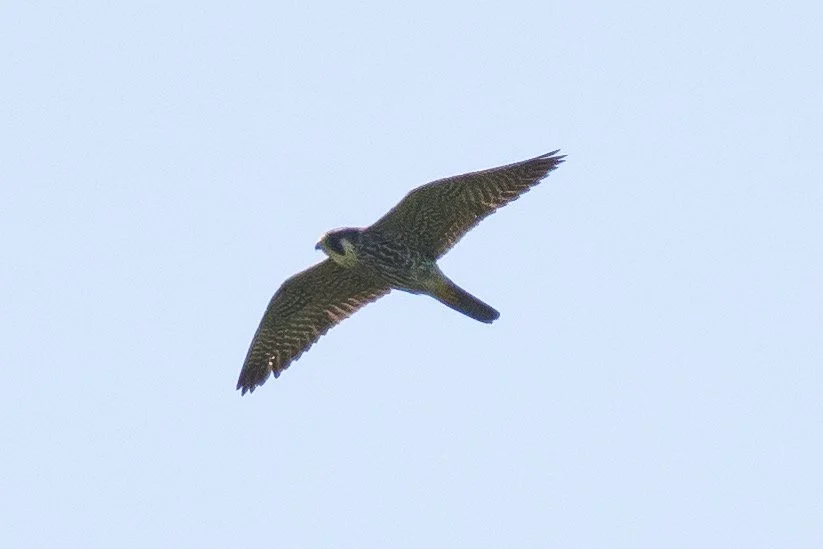2023 Big Day recap
On Friday, April 28, Andy Bell, J.R. Rigby, and myself conducted a Mississippi big day, to raise funds for Delta Wind Birds. As usual, we designed a route that we thought had a chance to set a new state record, this year again deciding to stick exclusively to the three coastal counties.
To maximize the total number of species on a big day in spring along the Gulf of Mexico, it is important to time your attempt relative to the weather, so that conditions are not perfect for northbound songbird migrants to sail over the coast with a tailwind. Rather, you prefer some combination of rain and north winds over the northern Gulf, encouraging migrants to stop when they see land (a so-called "fallout"). As such, we became quite intrigued about a week ago, when it became clear that coastal Mississippi was going to see some significant rain on Thursday, April 27 (see prediction in image to right). Our idea was to plan a big day attempt for Friday the 28th, hoping that (1) a fallout would happen on Thursday, AND (2) weather conditions Thursday night & Friday morning would be such that fallout migrants would be discouraged from fleeing coastal migrant traps--maybe some light rain, north winds, etc. This has been our preferred approach, since birding ON the day of a fallout itself can be difficult, due to the inclement weather (again, see prediction in image to right!). Well, unfortunately, only the first of those two hopes were realized.
Biloxi skyline by night
Birding Jones Park beach by spotlight
Safari-style birding can work really well!
We had a blast, despite missing the fallout birds.
As many of you know, the fallout on Thursday happened, big time. As we were driving down to the coast Thursday evening, friends birding on the coast were telling us it was their best birding day of the spring. All the migrant trap spots had huge songbird numbers--thrushes, tanager, and warblers were everywhere in big numbers and high diversity. Things were setting up perfectly, and it was difficult to contain our excitement. But would the migrants stick around until Friday, especially late morning when we would check our first migrant trap?
Things started well around 12:30am, with cooperative Great Horned Owl at a stakeout spot, and all three Catharus thrushes were vocal enough to pick out from their nighttime flight calls. But our nighttime freshwater marsh spot was "stingy." Rails, gallinules, and owls were quiet and unresponsive, including species that were cooperative at the same site last year. Hmm. Off to our dawn breeding bird spot on the Pascagoula River, which was also not easy--we got most of our target species (e.g., Yellow-throated Warbler, Yellow-throated Vireo, Pileated Woodpecker), but two key species (Swainson's & Kentucky Warblers) proved elusive. Our luck improved at the Seaman Rd Sewage Lagoons, which was hopping. All our target birds popped up in quick succession, plus some nice bonuses made appearances, such as Peregrine Falcon and Redhead. We were back on track and feeling good! Our main oceanside shorebird spot also delivered, plus a few migrant warblers made appearances in the seaside shrubs. Heading to our first real migrant trap, we had momentum.
But Greenwood Cemetery in Pascagoula was really dead, even for a cemetery. One lone American Redstart was the sole holdover from the major fallout yesterday, when friends had found oodles of warblers & thrushes at the same location. We didn't say it out loud yet, but we all suspected at that moment that our fate had been sealed--the weather overnight and through the morning had been too good, and songbird migrants had mostly cleared out of the coastal migrant traps. Our visit to Clower-Thornton Nature Trail--another good migrant trap where friends had enjoyed a significant fallout yesterday--confirmed it. There, it was sunny & hot, and we found a few songbirds (including our first Scarlet Tanager & Baltimore Orioles of the day), but not nearly the diversity we needed to boost our species total in a significant way. We soldiered on through the afternoon doldrums, picking up some key species along the beaches, including Marbled Godwit, Horned Grebe, Red-breasted Merganser, Bonaparte's Gull, and Seaside Sparrow. Another stop filled in some holes, including Anhinga, Northern Flicker, Red-shouldered & Red-tailed Hawks. Finally, we headed for Bethel Bike Trail, our typical end-of-day site for Red-cockaded Woodpecker, Bachman's Sparrow, Common Nighthawk, and Chuck-will's-widow. It's typically a beautiful and peaceful place to end a long day of birding, and this was no exception.
As we rested and tallied, we were glad to see we had at least reached 160 species--a respectable total, and a really fun sample of Mississippi's bird diversity, even if it was well short of 180, which would have been a new record. Ultimately, anything close to a new record was not in the cards that day, since the fallout migrants from Thursday didn't stick around. We also had some bad luck with too many species that are usually easy (where were all the Bald Eagles, for example??), and we missed way too many of the species that require some luck (like Belted Kingfisher, Swallow-tailed Kite, and American Oystercatcher)--we don't expect to get all of those, but you need to get your share. As always, we learned a ton about Mississippi's birds and their habits & habitats by plotting and executing this big day. As usual, we immediately turned to discussing lessons learned, and how we can make a better plan for next year. One thing we'll consider going forward is trying to conduct the big day ON the day of a fallout, instead of the day after (especially if overnight conditions look favorable for migrants to depart), even if it might mean dodging some dodgy weather. What do you think--could we have birded all day on the Mississippi coast on Thursday, or was it just way too rainy? Maybe we'll try it next year, if we have the fortune. Meanwhile, big thanks to all of our coastal birding friends for their tips and information, and to supporters of Delta Wind Birds for contributing to our Big Day fundraiser and thus to DWB's bird conservation efforts.
Our biggest misses were probably three raptors: Bald Eagle, Broad-winged Hawk, and Cooper’s Hawk, none of which had we missed on a previous Big Day! Inca Dove (never missed before), King Rail (never missed before), and Purple Gallinule (missed once before) were also big misses. We did well on shorebirds (23 species, or 2nd highest total ever), and reasonably well on waterfowl (all expected species, plus Redhead and Lesser Scaup). Our best birds were probably Peregrine Falcon (pictured below), Redhead, and Chestnut-sided Warbler. Here is an eBird trip report listing all the 160 species we found that day: https://ebird.org/tripreport/122810
Maybe our most exciting bird of the day? Peregrine Falcons are always a treat.







